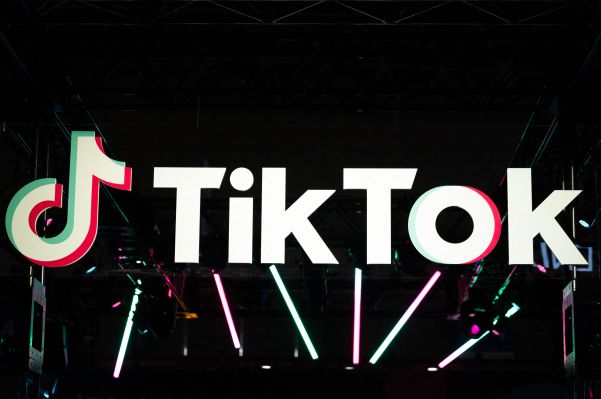
TikTok is testing a new “AI Song” feature that uses AI to create songs based on prompts that users enter, the company confirmed to TechCrunch. AI Song is an experimental feature and is currently only available to a select number of users. The feature is designed to be used for fun, not for trying to create the next viral song.
The company told TechCrunch that AI Song uses Bloom, a large language model, to create lyrics based on text prompts. The lyrics are then paired with music from a pre-saved catalogue created within TikTok.
TikTok user Jonah Manzano posted a walkthrough of the new feature to detail how it works. According to the video, AI Song starts by asking users to “enter a prompt to generate a song.” TikTok provides some suggested prompts such as “Going to concerts,” “A new beginning” and “Cuddling with pets.” Or, you can enter your own prompt. After a prompt has been entered, the app will start generating your song.
After a few seconds, the app will then create lyrics related to your prompt and pair it with music. You can change the vibe of the song by switching between “pop,” “EDM” and “Hiphop.” The final result is a strange song with lyrics based on the text prompt that was entered.
According to the video, the app notes that “there are rules that must be followed” when using AI Song. For instance, the feature can’t be used to exploit or harm minors or spread false or personal information that harms others. It also can’t be used to defame, impersonate or harass others.
As with any other test feature, it’s unknown when or if AI Song will roll out more widely. TikTok did note that it may change the name of the feature in the future.
TikTok isn’t the only company that has rolled out tools to help users create music for short-form videos. A few months ago, YouTube launched a “Dream Track” feature that lets creators build 30-second AI-generated soundtracks. Users can create soundtrack in the voices of select artists, including Alec Benjamin, Charlie Puth, Charli XCX, Demi Lovato, John Legend, Sia, T-Pain, Troye Sivan and Papoose.
It’s worth noting that while TikTok’s new feature isn’t designed for the music industry, TikTok parent ByteDance launched a free-to-use music production app in the United States last June to help musicians create and edit audio in a way that’s similar to portable smart digital audio workstations (DAWs).
With Ripple, users can directly sing or hum a melody into the app, after which it will use machine learning to expand the melody and turn it into an instrumental song. The app’s model was trained on music that is licensed to or owned by ByteDance. Ripple lets users record, cut, trim and edit audio files easily on their mobile device.
The new AI Song feature comes as TikTok has been pushing deeper into the music business. Last year, it launched its own subscription-only music streaming service called “TikTok Music” in select countries to take on companies like Spotify and Apple Music.
Although TikTok hasn’t shared any details about when it plans to launch the streaming service in the United States, it’s been over a year since ByteDance filed a trademark application with the U.S. Patent and Trademark Office for a service called “TikTok Music,” so we can likely expect a launch at some point.

